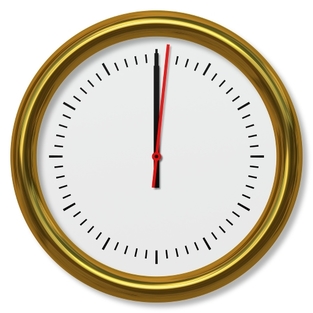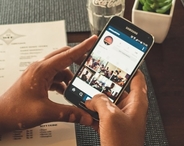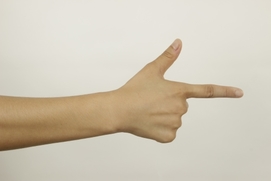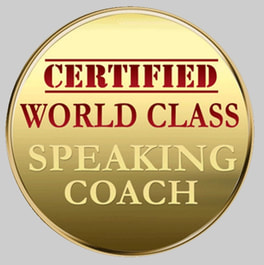
Let’s begin by learning all about the Opening Hook, and we are going to do it with a powerful exercise. It will take 10-15 minutes of your time, so make sure you are sitting at home in front of the computer. I understand that most blogs don’t make you engage in homework, but I promise it will prove fascinating and insightful. Are you ready?
I am going to ask you to watch 7 videos – but only the 1st minute of each. Each video contains a speech that’s been published by a website called TED.COM. If you haven’t heard of it, TED is a major resource for inspirational, informative, persuasive and entertaining speeches. I will list the Youtube links for each video (because Youtube is slightly easier to navigate… no offense, Ted).
EXERCISE: I want you to watch the 1st minute of each speech below and as you do, pay attention to how engaging and interesting the speech is (and for the purposes of this exercise, please don’t watch any further than 60 seconds). Click away:
- Bill Gross: The single biggest reason why startups succeed
- Ricardo Semler: How to run a company with (almost) no rules
- Abe Davis: New video technology that reveal an objects hidden properties
- Roger Stein: A bold new way to fund drug research
- Chrystia Freeland: The rise of the new global super-rich
- Barry Schwartz: The way we think about work is broken
- Tony Wyss-Coray: How young blood might help reverse aging. Yes, really
At this point I ask you to rate each speaker for the following:
- Building a relationship with the audience (how much do you feel you got to know the speaker)
- Engagement (how interested are you in hearing more)
- How memorable they were (which speeches do you remember the most right now, after you have finished the exercise?)
Now ask yourself, why did the most memorable and engaging speakers succeed so well?
Let’s examine the components each speaker used to open their presentations:
- Bill Gross – A series of facts
- Ricardo Semler – A personal story
- Abe Davis – A series of facts
- Roger Stein – A personal story with a visual aid, and a joke
- Chrystia Freeland – A series of facts
- Barry Schwartz - A question
- Tony Wyss-Coray – A visual aid with facts
Is it clear yet what elements make up the most powerful openings? If not, then let me list them in order of impact:
- A Personal Story
- Any Story
- A Question that resonates with the audience
- Humour
- A Visual Aid
These are the most successful Opening Hooks. They introduce their topics in a relatively intriguing way. They also engage the audience in an emotional way. Let's examine each in detail:
Personal stories are the most powerful way to open any presentation because you immediately:
- Build a strong relationship with your audience
- Engage their emotions
- Engage their memories
Stories are hands down the most engaging and memorable method for relaying information. Storytelling is what human beings used to teach facts before we had pens, papers and schools. Storytelling is in our DNA. If you have young children and your job is to tuck them into bed at night, I guarantee you they don’t want to hear a bunch of facts before sleep-time. They want a damn good story. The right good story will buy you up to 10 minutes of listening time from any audience. In public speaking terms, 10 minutes of undivided attention is gold dust!
By the way, which of the 7 speeches do you remember details from… right now? How many facts can you recall? Be honest. Here’s an equation as solid as anything mathematical...
Story = Emotion = Memorable
How about questions, then? Opening your speech with a question works quite well because it directly engages the thought process of your audience. In my blog on Technical Speeches I mentioned the importance of engaging the thought process of your audience. In short, questions imply interaction. Interaction is a sure-fire way to build a relationship and stick in your audience’s memories. Just make sure your question is relevant to your topic, message and audience!
I’m sure you will agree Barry Schwartz’s opening - “Why do we work?” - is a provocative and relevant question. With a question like that, you can buy another 2-3 minutes of listening time from your audience.
Other techniques include using humour. Humour is best employed within the context of a story, question or visual aid. Depending on the situation, a humorous moment can buy you between 10 seconds and 2 minutes of listening time.
A visual aid, by the way, is most useful when it’s pictorial (not factual). The visual aid should also ideally serve to enhance a story, question or joke. Therefore, it’s not much use on its own (unless it evokes a strong positive emotion).
What about those speeches you watched above that began with bare facts?
Be honest, can you remember any of the facts in the speeches that opened with bare facts? Maybe a few... just maybe... if you have a so-called photographic memory... or you really love the topic...
The problem with opening with facts is that you cannot be sure that your audience are ready to absorb and accept your facts as something important or even relevant to them. Facts needs to be sold, and they need to be memorable. And they need to be broken up throughout your speech, not machine gunned.
After 3 or more facts in a row the mind tends to switch off because it needs time to digest everything. The best way to break up your facts is with… drumroll… a story or question. This isn’t rocket science but 99.99999% of speakers don’t understand this… er, fact.
Before I finish I would like to make the point that I’m not saying facts are useless as openers. I’m also not suggesting that the speeches I listed above with fact-heavy openings are failures. After all, they score highly in viewer numbers. If the subject matter means a lot to you (i.e. you have an emotional connection to the topic) you will likely continue listening. But you have to be in the mood (i.e. be in a receptive emotional state). Otherwise the speech won’t engage you (hook you emotionally). And if you are forced to sit through it, the speech won’t be memorable (because our memories work strongest on an emotional level).
Did I mention how important emotions are?
To prove that I'm not bashing fact-heavy openings let me finish with a link to a speech that opens successfully with a series of facts…
Marlene Zuk: What we learn from insects’ kinky sex lives
This speech works very well for several reasons:
- It’s funny (a positive emotional reaction)
- It’s quirky (an emotional reaction also)
- The subject matter of sex has a strong emotional reaction
- We get to know the personality of the speaker (she is a relatively open person)
Facts can work as openers, but they need to be surrounded by emotional hooks. And you need to be an open person – someone who doesn’t hide behind their speech. Make your facts hilarious, quirky and very much related to your audience’s base motivations (which are always emotional).
Did I mention how important emotions are?
Stay tuned for Part 3 where we learn all about the Road Map and the Big Promise...
Author: Eddie O'Hanlon









 RSS Feed
RSS Feed
